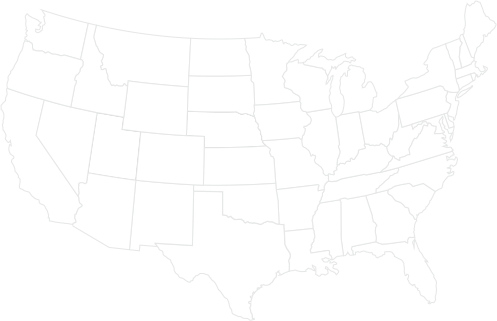Alternative Feed Options For Supplemental Beef Cattle Nutrition
• Posted in Articles
Supplemental feeds are an important part of beef cattle nutrition, especially in seasons of low quality forage when cattle need more support to fulfill their nutritional requirements. Many producers, however, reduce costs by leveraging alternative feed options that can supplement lacking nutrients. Alternative feed ingredients are byproducts derived from the processing of other agricultural commodities, making them available at fairly low costs, especially in regions where the original crop is grown.
“With alternative feeds, we’re looking for a specific nutrient in the ingredient our cattle aren’t getting from common feed sources, such as grass, grain and hay,” said David Whittington, Ph.D. ruminant nutritionist from South Dakota. “For example, in the early season, when we’re starting to get green grass and then mature grass over summer, there is very little needed by grazing cattle but as we go into the fall and winter, the quality of the forage starts to decline. There is still energy contained in the dry matter but there’s likely not sufficient protein to feed the microbial population in the rumen, which can digest fibrous structures and release energy for the animal. So, that’s where supplemental ingredients come into play.”
While the exhaustive list is long, below are five alternative feeds beef producers often use for supplementation:
1. Whole Cottonseed
Key Nutrients: Protein, Energy, Fiber
According to Whittington, whole cottonseed is a nutrient-dense option that’s high in protein, which is the component most often lacking in beef cattle diets. Cottonseed also contains ample energy and fiber to promote digestive health.1 Because of its triple-nutrient composition, whole cottonseed is also valuable in feedlot diets. There are several other cotton byproducts that are beneficial for cattle as well, such as cottonseed meal and cotton gin trash. Cottonseed products are especially economical for those in cotton growing regions of the southeastern U.S., but today’s expansive transportation systems have made this valuable ingredient feasible for beef producers across the country.
2. Sunflower Meal
Key Nutrients: Protein
Sunflower meal is a good, economical source of protein, especially for producers in the Northern Plains where most sunflowers are grown. However, the nutrient composition of sunflower meal can vary greatly depending on how they’re processed and, more specifically, on the degree of dehulling. The hulls are high in indigestible fiber, which lowers energy and effects the crude protein.2
3. Distillers Grains
Key Nutrients: Protein
Distillers grains are a byproduct of ethanol production and can be sold wet or dry. When shipped long distances, dried distillers grains are the more feasible option because they’re lighter and easier to store. Producers should be aware of the fat and sulfur content of distillers grains because they can cause adverse effects if fed in excess.3
4. Hominy
Key Nutrients: Energy, Protein
Hominy is a byproduct of corn processing for human consumption and contains corn bran, germ and starch. Hominy is higher in energy, protein, fat and fiber than corn grain, so it’s often used as a replacement for corn.4
5. Wheat Middlings
Key Nutrients: Energy, Protein, Phosphorus
Wheat middlings, also referred to as wheat midds, are byproducts of milling wheat for flour. They are high in energy, protein and phosphorus, and are moderately palatable. They also contain moderate levels of starch, which helps prevent depression of feed intake and digestibility of forage. When fed at higher levels, the phosphorus content needs to be balanced with a calcium supplement.4
Factors to Consider in Developing a Cost-Effective Supplementation Program:
- Limiting Nutrient Identification: The first step in developing a successful supplementation program is identifying the nutrients most limiting to productivity and then sourcing that nutrient at the lowest cost possible.
- Cost: Most producers choose alternative feeds because of the cost savings. However, not every product is guaranteed to benefit the bottom line. Talk with brokers, investigate your supply options and complete a cost analysis to ensure it’s an economically advantageous addition to your feeding program.
- Location: Producers typically get the best bang for their buck when purchasing locally sourced alternative feeds because it’s an easy way to cut down on transportation costs. Consider ingredients that are grown abundantly in your region to save some extra money.
- Storage and Equipment: Not all ingredients are stored or handled the same. Think about what storage you have available and what equipment you would need for handling. Would those needs add extra costs?
- Consistency: Product consistency and availability are key in formulating reliable diets for your cattle day after day.
- Feeding Limitations: Most ingredients are beneficial to a point but, if overfed, can be harmful. Know these limitations to ensure the ingredient will fulfill your cattle’s needs when fed within range.
- Nutrient Composition: For byproduct feeds especially, nutrient composition can vary from shipment to shipment so don’t rely solely on a generalized table of nutrient values. Instead, determine nutrient content by analyzing samples.
While many producers have great success in using alternative feed sources for their cattle, consult a nutritionist if you’re considering a change in your feeding program.
If you’re interested in incorporating whole cottonseed into your supplementation program, find a dealer through the Cottonseed Marketplace.
1Kellog, D. W., J. A. Pennington, Z. B. Johnson, and R. Panivivat. 2001. Survey of management practices used for the highest producing DHI herds in the Unites States. J. Dairy. Sci. 84:E120– E127. doi:10.3168/jds.S0022-0302(01)70206–8
2Rush, Ivan G. “Using By-Product Feeds in Cow/Calf Programs.” UNL Beef, Dec. 2007. Available at: beef.unl.edu/beefreports/symp-2007-07-xx.shtml. Accessed September 2, 2020.
3Mathis, C P, et al. “Using Cotton Byproducts in Beef Cattle Diets.” New Mexico State University College of Agricultural, Consumer and Environmental Sciences, May 2007. Available at: https://aces.nmsu.edu/pubs/_circulars/CR612/welcome.html. Accessed September 2, 2020.
4Kunkle, W E, et al. “Using Byproduct Feeds in Supplementation Programs.” University of Florida Animal Sciences. Available at: animal.ifas.ufl.edu/beef_extension/bcsc/1995/docs/kunkle.pdf. Accessed September 2, 2020.

